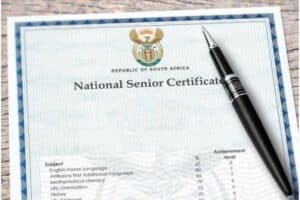The DA is now part of the government of national unity alongside the ANC.

Twenty five years since the DA was formed, the party is still trying to convince South Africans that they are not a whites-only party.
The party was established on June 24 2000, following a merger between the Democratic Party (DP) and the New National Party (NPP).
Over the years, the party has seen many prominent black leaders leave for various reasons, including Mmusi Maimane, Herman Mashaba, Lindiwe Mazibuko, Mbali Ntuli, and former Midvaal mayor Bongani Baloyi.
Political analyst Sanet Solomon said the departures of these black leaders have left many South Africans wondering about the internal affairs of the DA.
“The DA has been subject to a lot of critique given its struggle to retain its prominent black leaders. This challenge has translated into its inability to extend its voting base.
“While some of its policies have the ability to positively impact society, voters are also influenced by perception,” Solomon said.
Transformation in the top structures
Solomon said black leaders do not seem to have strategic positions in the party, which could easily create an impression that the party only really serves one racial group.
“Voters may need to see better integration. This may require the Federal Chair to be one racial group, the Chief Whip of another group, and the leader of a completely different group.
“South Africa is diverse, and this needs to be reflected in their leadership positions. There are phenomenal and competent people across all the diverse groupings. This is what people want to see,” she said.
Despite the DA being the second biggest party in the government of national unity (GNU), Solomon said it is unlikely the party will run the country by themselves anytime soon.
“Some of their policies would be suitable for a ruling party, but it is unlikely that they would be able to become a majority party as the current system of proportional representation would result in more coalition governments,” she said.
ALSO READ: Zille to the rescue: Will she save Joburg as the city’s mayor?
DA’s balancing act
Another analyst, Professor Susan Booysen, said the DA has made progress since it was founded.
“They have managed to keep their electoral territory, opinion polls indicate that they have made slight advances.”
Booysen said that even though the DA is not close to being a majority party in SA, it could use the current coalition politics to influence policy.
“If they continue this current but modest progress, then they will probably be a very likely or inevitable coalition partner for future governance,” she said.
Booysen said the DA has been forced to tread carefully around issues of race in the party.
“They are doing an often torturous, delicate, intricate balancing trick between coming across as more inclusive and simultaneously playing to their own small, racially-defined constituencies.
“It is the dilemma it is going to run into: simultaneous and competing endorsements by its own small internal constituencies and the broader South African community that is looking for restitution.”
DA for all
DA spokesperson Willie Aucamp rubbished claims that the party only serves white interests.
“The DA is the most diverse party in South Africa, and we elect leaders on merit, not race.
“Yes, people come and go in politics, but we remain focused on building a capable, non-racial alternative that serves all South Africans.”
Aucamp said the party has proven that it can lead where it governs, and is now ready to take over the Union Buildings.
“South Africans are ready for a government that gets things done. The DA has shown we can lead with competence and integrity, and more people are turning to us to rescue the country from decline, including in Gauteng,” he said.
The party will celebrate its birthday with a blanket drive on Tuesday.
NOW READ: ‘I am finally home’ – Liam Jacobs ditches DA for Patriotic Alliance






